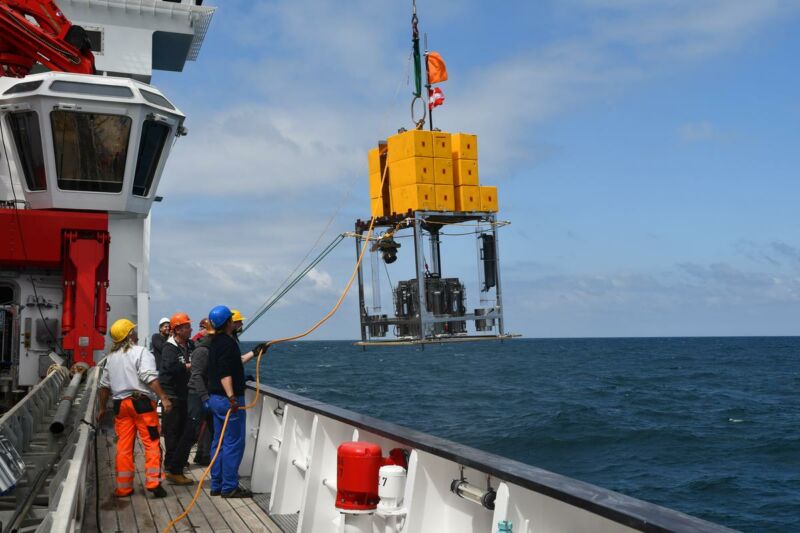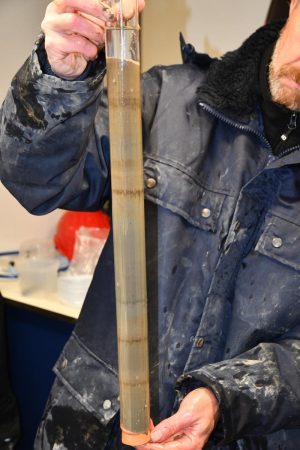
Although pollution controls have significantly reduced the mercury content of coal-fired plant emissions, the latest Global Mercury Assessment still estimates that there has been a 20 percent increase in anthropogenic mercury emissions between 2010 and 2015. A new study provides some insight into where all that mercury might end up: there are unprecedented levels of mercury in up-to-now-unmeasured deep-ocean trenches.
The WHO categorizes mercury as one of the top 10 chemicals of major health concern, and as of 2020, over 120 countries have been working together to reduce environmental mercury through the 2017 Minamata Convention on Mercury. In its elemental and mono-methylated form (methylmercury), mercury is a potent neurotoxin. Methylmercury in particular biomagnifies, which means it increases in concentration as it goes up the marine food chain. That has prompted lots of warnings about the consumption of fish and seafood.
This latest report is the first to measure mercury-accumulation rates in sediment cores from some of the deepest parts of the ocean—the hadal zones (>6 km depth). While the deep ocean is considered one of the most important, and relatively safest, places for mercury to end up, the rates of accumulation were up to 56 times greater than prior estimates. The highest measured concentrations were also nearly as high as some of the most contaminated bodies of water on the planet—a jarring finding given that these locations (the Atacama and Kermadec trenches) aren't in the vicinity of any known mercury sources.
This finding shows that a lot is still left to understand about how much mercury is in the environment, where it's going, and how it's getting there.
Complicated chemistry
Tracking where mercury is and what it's doing in the environment is complicated by the many physical and chemical transformations that are possible—not all of which are well understood. Elemental and oxidized mercury can exist as vapors, and this allows it to move thousands of miles away from its origin. All the while, mercury undergoes chemical transformations in the atmosphere, and once it settles out of the air, conditions on land and in water make additional changes possible, including bacterial conversion to methylmercury.
Natural sources of mercury, such as volcanic eruptions and rock weathering, have always existed. But according to the latest estimates for the UN Environment Programme, human activities have caused a 450 percent increase in atmospheric mercury compared to natural levels. While the biggest mercury spikes occurred largely due to gold and silver mining between 1520 and 1920, global emissions are still on the rise.
Fossil fuels account for about one-quarter of this increase, but lately the leading contributor has again been artisanal and small-scale gold mining. This kind of extraction has released roughly 1,220 tons of mercury in 2015 alone (nearly 40 percent of that year's global total).
Another major concern about mercury is that it can reside in the environment for centuries before it is naturally buried on land or in ocean sediment. Climate disturbances such as rising temperatures and receding lakes and oceans may also cause remobilization out of these sinks and back into the atmosphere.
Changes over time

"It's really technologically remarkable what the Danish and German researchers who retrieved the samples were able to do," says Peter Outridge, corresponding author for the current study, as well as lead author of the United Nations' Global Mercury Assessment. "Think about trying to try to take a sediment core at the end of a 7- or 8-kilometer-long cable from a ship that's bobbing around on the ocean—it takes many hours to send the sampler down and bring it back up, and then you have to hope that there's actually a sample there and that you didn't hit a boulder or something."
These sediment cores give the first direct evidence of how deep-ocean mercury concentrations have been changing over the last 60-190 years (i.e., the flux). The results show rates between 6 and 56 times greater than what researchers had inferred from measurements in other parts of the ocean. The concentrations were also the highest recorded at any site that was not in the area of a known source, such as an underwater volcano or industrial contamination.
"The concentrations we found—particularly the maximum concentrations in the Atacama trench off Chile—are almost as high as you would see in the Mediterranean Sea or the St. Lawrence Gulf in Canada, which are areas that are actually contaminated long-term by industrial releases of mercury," says Outridge. "To find those sorts of concentrations in a remote part of the ocean—that was a surprise—and the accumulation rates were at least an order of magnitude higher than the averages that have been calculated in the past from water column measurements."
Tracking down the origins
This research only gives data from two of the more than 40 deep-ocean trenches, so additional measurements from other trenches are needed for a more complete understanding of how widespread the accumulation is. Tracing where all the mercury comes from is currently a challenge, but recent research has shown that monitoring different isotope ratios of mercury can be very effective for tracking its movements. While such evidence isn't available yet, it's also not a complete surprise that the oceans' mercury might end up in trenches.
"I think that we would expect concentrations to increase in the sediment as you go from coastal areas into the deep ocean," says Outridge. "If you take lakes as an analogy, if you go from the edge of the lake out to the deepest part of the lake, then the concentration does increase, of mercury and other elements. I think what's going on here is that we're seeing a particle filtering effect, where the finest sediment makes it to the deepest part of the ocean and the coarsest sediment settles out in the coastal areas."
With relatively little life down there and low chances of the mercury moving out before it's buried by plate tectonics, we should be somewhat reassured that mercury might be concentrating in these trenches. But the potential damage en route is still significant, and it's in everyone's interest to keep working to minimize mercury use as much as possible.
Scientific Reports, 2021. DOI: 10.1038/s41598-021-90459-1
K.E.D. Coan is a freelance journalist covering climate and environment stories at Ars Technica. She has a PhD in chemistry and chemical biology.



3175x175(CURRENT).thumb.jpg.b05acc060982b36f5891ba728e6d953c.jpg)

Recommended Comments
There are no comments to display.
Join the conversation
You can post now and register later. If you have an account, sign in now to post with your account.
Note: Your post will require moderator approval before it will be visible.